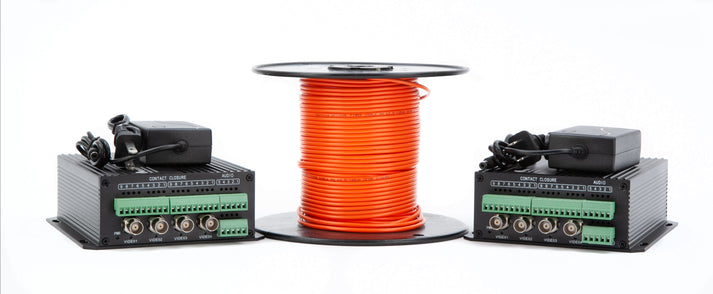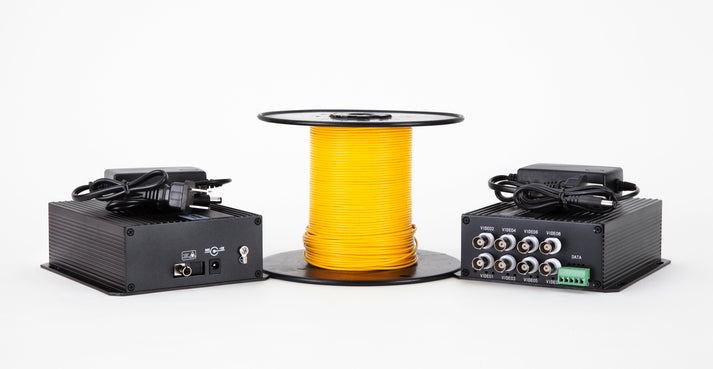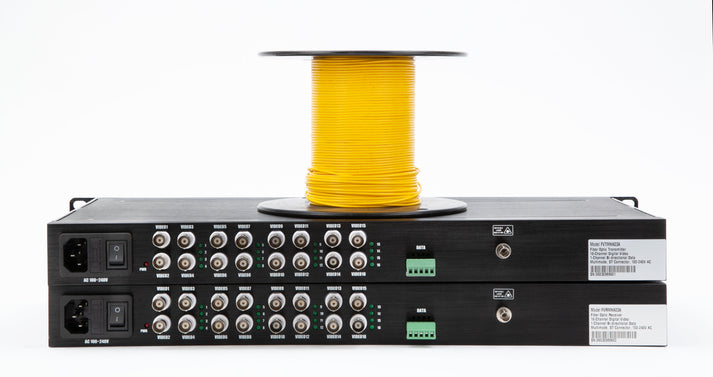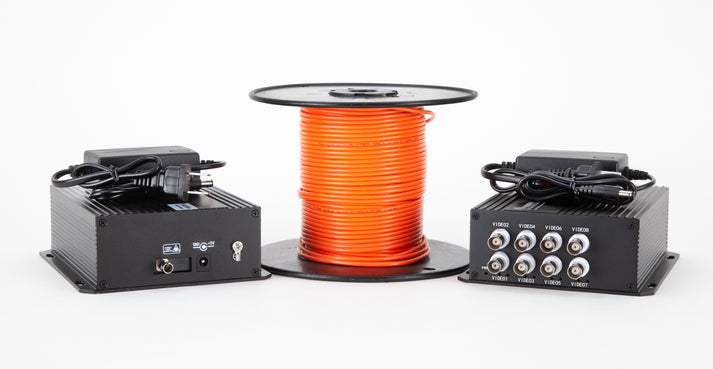
In today’s world, security is more critical than ever, whether it’s for protecting your home, office, or high-security government infrastructure. One of the most efficient ways to ensure comprehensive surveillance is through video installation kits. These kits are designed to streamline the installation process by providing all the necessary components for setting up a complete video surveillance system. From CCTV video installation kits to fiber optic video installation kits, they offer reliable, ready-to-use solutions for any security setup.
Whether you're looking for analog video installation kits for a traditional security system or IP camera installation kits for modern, high-tech solutions, these kits offer a broad range of options for different needs.
In this blog, we will explore the various types of video installation kits available, discuss their unique features, and provide insights into the best practices for optimizing your surveillance system’s performance and reliability.
What Are Video Installation Kits and Why Are They Essential?
Video installation kits are essential tools for anyone looking to set up a video surveillance system. These kits come pre-configured with all the necessary components—cameras, cables, connectors, and more—making the installation process straightforward and hassle-free. Whether you’re installing a system for a small business, government facility, or military-grade surveillance, these kits make it easier for you to achieve professional results.
The CCTV video installation kits are the most common, perfect for businesses and homes that need to monitor entrances, exits, or other critical areas. For more complex setups, such as those in large institutions or outdoor settings, fiber optic video installation kits or turnkey video installation kits are recommended to ensure video quality and long-distance transmission without signal loss.
Explore Our Video Installation Kits
Types of Video Installation Kits: Tailored Solutions for Every Need
There is no one-size-fits-all solution when it comes to video surveillance, which is why the market offers a variety of video installation kits to cater to different needs. Below, we’ll take a look at the most popular kits available and how they suit specific use cases.
1. CCTV Video Installation Kits
For anyone setting up a traditional CCTV video installation kit, these kits are a go-to. CCTV video installation kits generally include high-quality analog cameras, coaxial cables, BNC connectors, power adapters, and all the necessary hardware. These kits are perfect for small to medium-sized surveillance setups, such as in retail stores, offices, or homes.
2. Fiber Optic Video Installation Kits
If you require long-distance transmission, fiber optic video installation kits are the ideal solution. Fiber optics offer faster speeds, greater bandwidth, and better video quality over long distances compared to traditional copper cables. Fiber optic video installation kits for CCTV or fiber video kits for contractors are essential for large-scale installations like airports, stadiums, defense and military video installation kits.
These kits include fiber optic cables, media converters, and sometimes even advanced features like ST connectors for seamless integration. Video installation kits for critical infrastructure will often include fiber optic solutions, ensuring stable video transmission even in remote locations.
3. Analog Video Installation Kits
Despite the rise of digital systems, analog video installation kits are still widely used, especially for those upgrading older systems. These kits include analog cameras, coaxial cables, and BNC connectors. Complete analog to fiber video installation kits offer an upgrade path for those looking to modernize their old analog systems, integrating them with fiber optics for better performance over long distances.
4. IP Camera Installation Kits
For businesses or individuals wanting to install a more modern video surveillance system, IP camera installation kits are a great choice. These kits typically include IP cameras, PoE (Power over Ethernet) adapters, network cables, and NVRs. IP-to-fiber camera install kits offer a solution to integrate IP cameras into a fiber optic network, providing the best of both worlds.
5. Security Video Installation Kits
For higher-level security needs, such as in government video installation kits, military video installation kits, or video installation kits for border security, these kits are built to handle specialized requirements. They offer advanced features such as video transmission kits with encryption, ensuring the safety of sensitive information. These kits typically include robust hardware and features designed to meet compliance and security standards for high-security environments.
6. Turnkey Video Installation Kits
Turnkey video installation kits offer a complete, ready-to-install solution for users who want a hassle-free setup. Whether it’s for a commercial video installation kit or a video installation kit for airports, turnkey kits come pre-configured and include all the components needed to get your system up and running. They eliminate the need for detailed planning, as everything is designed to work together seamlessly.
Key Advantages of Using Video Installation Kits
1. Streamlined Installation Process
Video installation kits are designed to make the setup process as simple and straightforward as possible. Whether you’re using a plug-and-play video installation kit or a turnkey video installation kit, these pre-configured packages eliminate the need for technical expertise in most cases. All the essential components such as cameras, connectors, and cables are included, ensuring that they are compatible with each other. This makes the installation process smoother, faster, and more efficient.
For large-scale installations like video installation kits for stadiums or video installation kits for smart cities, the kits are designed to ensure that all components are able to handle the demands of the installation, making it easier for technicians to deploy and manage the system.
2. Scalability and Flexibility
Many video installation kits offer scalable solutions that can grow with your needs. For example, kits like the 16-channel video installation kit or 8-channel video installation kit are designed for larger setups, such as in factories, offices, and government buildings. These kits allow for easy expansion, meaning you can add more cameras or other components as needed.
Scalability is essential for businesses or organizations planning for future growth, whether it's adding more security cameras to your current surveillance network or upgrading to a more advanced system like an IP camera installation kit.
Best Practices for Installing Video Surveillance Systems
Proper installation and maintenance of your video surveillance system is crucial to ensure its longevity and effectiveness. Following best practices during the installation process can save you time, reduce issues, and enhance the overall performance of the system. Here are some tips for optimal setup:
1. Plan Your Camera Placement Carefully
Before you start the installation, it’s important to plan where you will place your cameras. Consider areas of high traffic, blind spots, and entrances or exits. For large-scale installations, such as video installation kits for airports or commercial video installation kits, the placement needs to be strategic to ensure optimal coverage.
2. Use the Right Cables for the Job
Selecting the right type of cable is crucial for maintaining signal integrity. For long-distance setups, such as in fiber optic video installation kits for stadiums or video installation kits for border security, fiber optic cables will provide the best video quality over extended distances. Always ensure you’re using coaxial cables for analog systems or Ethernet cables for IP cameras.
3. Secure Your Power Sources
Make sure that the power sources for your cameras and recording equipment are stable and secure. PoE (Power over Ethernet) solutions are great for simplifying installations, especially in IP camera installation kits. They allow both power and data to be transmitted over a single Ethernet cable, reducing clutter and the need for additional power outlets.
4. Test the System Thoroughly
Once the system is installed, it’s important to test all components. This includes checking the video feed for clarity, adjusting camera angles, and ensuring that all cables are securely connected. For larger setups, such as video installation kits for smart cities, ensure that all cameras are functioning properly across the network.
5. Regular Maintenance
Regular maintenance is key to ensuring the long-term functionality of your surveillance system. This includes cleaning cameras, checking cables for wear and tear, and verifying that the recording equipment is functioning correctly. Performing periodic checks on your video installation kits will keep your system running smoothly and prevent potential issues down the line.
Conclusion: Make the Right Choice for Your Surveillance System
Choosing the right video installation kit is crucial for ensuring that your surveillance system is reliable, high-quality, and efficient. Whether you need a CCTV video installation kit for a small business or a fiber optic video installation kit for a large-scale infrastructure project, there’s a kit tailored for every need. By understanding the components of these kits and selecting the one that best fits your requirements, you can ensure the success of your surveillance setup.
Investing in the right video installation kit not only saves you time and effort but also provides long-term security and peace of mind. Whether you're securing your home, business, or government facility, video installation kits are the comprehensive solution you need to monitor, protect, and safeguard your space.









